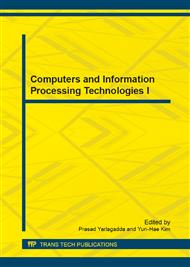[1]
Jonathan B, Tully F, Jim K, et al. Little Ben: The Ben Franklin Racing Team's Entry in the 2007 DARPA Urban Challenge[J]. Journal of Field Robotics, 2008, 25(9): 598-614.
DOI: 10.1002/rob.20260
Google Scholar
[2]
Chris U, Joshua A, Drew B, et al. Autonomous Driving in Urban Environments: Boss and the Urban Challenge [J]. Journal of Field Robotics, 2008, 25(8): 425-466.
Google Scholar
[3]
Sebastian T, Mike M, Hendrik D, et al. Stanley The Robot that Won the DARPA Grand Challenge[J]. Journal of Field Robotics, 2006, 23(9): 661-692.
Google Scholar
[4]
Stefan F. Campbell. Steering Control of an Autonomous Grand Vehicle with Application to the DARPA Urban Challenge[D]. USA: Massachusetts Institute of Technology, (2007).
Google Scholar
[5]
Coulter R C. Implementation of the Pure Pursuit Path Tracking Algorithm[R]. Pittsburgh, PA: Carnegie Mellon University, Robotics Institute, (1992).
Google Scholar
[6]
Xijun Zhao: Study on the Lateral Dynamics and Control for Intelligent Vehicles. Beijing: Beijing Institute of Technology, (2011).
Google Scholar
[7]
H Zhang, J Gong, Y Jiang, G Xiong, H Chen An iterative linear quadratic regulator based trajectory tracking controller for wheeled mobile robot. Journal of Zhejiang University-Science C 13 (8), 2012: 593-600.
DOI: 10.1631/jzus.c1100379
Google Scholar
[8]
Y. Jiang, J. Gong, G. Xiong, etc, Design of a universal self-driving system for urban scenarios-BIT-III in the 2011 Intelligent Vehicle Future Challenge. 2012 IEEE Intelligent Vehicles Symposium, 2012: 506-510.
DOI: 10.1109/ivs.2012.6232202
Google Scholar
[9]
Y. Jiang, X. Zhao, J. Gong, G. Xiong, System design of self-driving in simplified urban environments. Chinese Journal of Mechanical Engineering. 48(20), 2012: 103-112.
DOI: 10.3901/jme.2012.20.103
Google Scholar
[10]
Y. Jiang, J. Gong, G. Xiong, H. Chen, Research on Differential Constraints-based Planning Algorithm for Autonomous-driving Vehicles. Acta Automatica Sinica. 39(12), 2013: 2012-(2020).
DOI: 10.3724/sp.j.1004.2013.02012
Google Scholar
[11]
Y Hu, J Gong, Y Jiang, L Liu, G Xiong, H Chen, Hybrid Map-Based Navigation Method for Unmanned Ground Vehicle in Urban Scenario. Remote Sensing. 5 (8), 2013: 3662-3680.
DOI: 10.3390/rs5083662
Google Scholar


